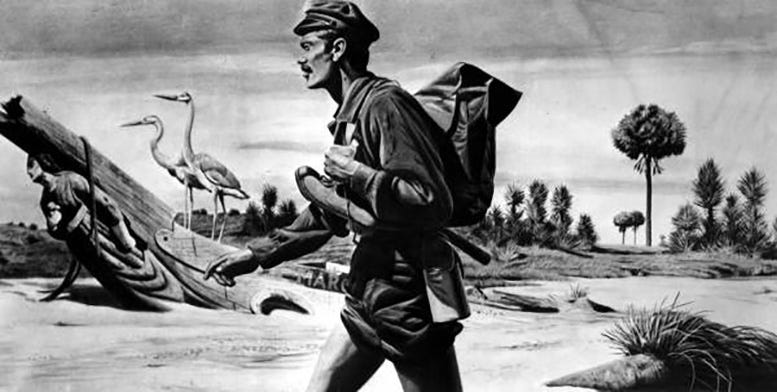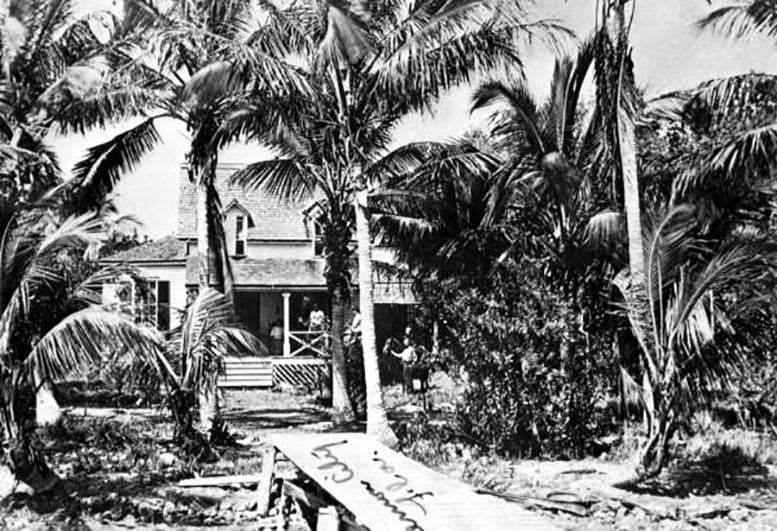Before the Railroad: The Southeast Florida Frontier
What was life like in Southeast Florida before the incorporation of the City of Miami. Dr. Paul George shares a brief glimpse into area before the railroad was extended to the Miami River in 1896.
Greater Miami is young, as developed entities goes. While the county stretches back to 1836, the city of Miami, its flagship municipality, traces its corporate existence only to 1896. Further, the county’s population in 1890 was less than 900, despite its expansive borders that reached north as far as the St. Lucie Inlet. Even with its paucity of people, the county’s early decades were rich in farming communities that arose primarily along waterways. And their stories are also rich in lore and in life.
Lake Worth, located in the northern portions of the county, hosted settlers in Juno, which also served as late as 1899 as the county seat. Tiny Lantana, lying near the southern shores of Lake Worth, was the northern terminus for the Barefoot Mailman, who delivered mail between 1885 and 1892, along the shoreline of the Atlantic Ocean to the mouth of the Miami River sixty miles south. The future Fort Lauderdale claimed just a single digit population in 1890, with those accountable for this figure the keeper and his family at the House of Refuge, a federal installation on today’s Fort Lauderdale Beach, designed to assist shipwrecked mariners and victims of storms who found themselves on the barren shoreline.
Larger homesteading communities were found in today’s Miami-Dade County, and included Biscayne, corresponding to a portion of today’s Miami Shores, Lemon City, a slice of contemporary Little Haiti, Buena Vista, still known as such some, though the blanket term “Miami Design District,” is its more common place name today. Other communities included Coconut Grove, Larkins, near today’s posh Cocoplum development, and Cutler, on the site of today’s Charles Deering Estate.
These communities shared many characteristics: they were overwhelmingly farm communities by homesteading land given them by the federal government; those who settled there were sturdy to survive the insects, isolation, long hours of toil under a hot sun, an unforgiving terrain, and summer with their capricious storms, heat and humidity; many denizens came from the north, but even more, perhaps, from the southeast, namely the Bahamas; the most common mode of conveyance from one place to another, especially for those settlements found in today’s Miami-Dade County, was by sailboat.
Whereas we once believed these communities began in the nineteenth century, archaeological evidence over the past half century as well as recent research in Spanish archives have peeled back layer after layer of history. If you could repeat the term “grandparent” 400 times, you would be at what is believed, at this time, to be the starting point for human settlement in Southeast Florida some 10,000 years ago! And the area where we located these ancient human remains is near today’s Charles Deering Estate.
What transformed a region from the St. Lucie Inlet south to the tip of the Florida peninsula was the entry of Henry M. Flagler’s Florida East Coast Railway, which was already in West Palm Beach, a town created by the rail, in 1894. By 1896, following the importuning of Julia Tuttle and Mary Brickell, among others, Flagler, the wealthy industrialist, had brought his rail to the north bank of the Miami River and, in the process, birthed the City of Miami.
But to back up a few years is to find a future City of Miami consisting of just a couple of families, namely, the Tuttles and Brickells residing along both banks of the Miami River near its mouth. Much more important were the settlements north and south of the River, especially Lemon City and Coconut Grove. They shared similarities: both looked out over Biscayne Bay; the chief mode of labor was farming; each exhibited the trappings common to every settlement: a main street offering lodging, retail, food and drink; institutions of education, worship, and fellowship. Additionally, both hosted large black and white Bahamian populations.
Yet the differences between them were stark. Lemon City’s population was less cosmopolitan than that of the Grove, and it was surely less eccentric and creative. However, it was larger in size and better connected to points north once the Bay Biscayne Stage line began operating in the early 1890s. While both communities arose near the shoreline where the subtropical hammock is thick and seemingly impenetrable before yielding to piney woods, Lemon City reached even deeper into the interior to a prairie area not too many miles away from the eastern edge of the Everglades.
In the next article by Paul S. George, he will explore the development of Coconut Grove, arguably the most attractive and dynamic of the early settlements along the waters of Biscayne Bay.
Dr. Paul S. George is the resident historian of HistoryMiami and best known for his very extensive tour offerings around South Florida. He has been giving tours through HistoryMiami since 1988. Paul taught at Miami-Dade College from 1991 until his retirement in 2016. He has authored seventeen books and hundreds of articles and book reviews. He frequently appears on television, radio, newspaper articles and other media outlets as Miami’s de facto expert on the history of South Florida.
Related Article:
Images:
Cover: Lake Worth in 1880s.
Figure 1: Mural of Barefoot Mailman in WPB Post Office.
Figure 2: Peacock Inn in 1880.
Figure 3: Lemon City Library in 1900.






